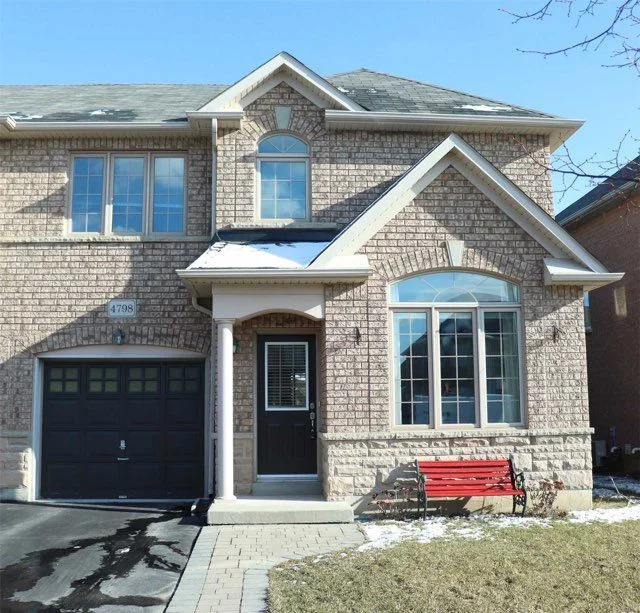When was the last time you painted the outside of your house? Day after day, you realize the colour isn’t as brilliant as it once was when you get home from work. You go in for a better look, concerned, and notice the paint is starting to crack! There are visible chips and what looks to be a separation between the paint layer and the underlying material.
It appears that it is time to repaint the exterior of your property.
How Often Should You Paint the Outside of Your House?
The precise answer depends on the paint you used, the quality of the paint job, and the materials used to construct your home’s exterior. However, as a general guideline, your home’s body should be painted every 5 to 10 years.
It’s critical to investigate how exterior paint adheres to various materials to determine when your home’s outside needs to be repainted.
That top layer of paint is your home’s first defence against the elements, extreme weather, and sun fading. It is a defensive barrier that protects and extends the life of your home.
5 Years of Aluminum Siding
If your property has aluminum siding, you should paint the exterior every five years. Because aluminum siding is constructed of metal, it expands and contracts with changing temperatures. You’ll need flexible paint that can endure force, and 100% acrylic latex paint is the best type for aluminum siding.
5-6 Years Stucco
You should repaint the exterior of your home every five to six years if you have stucco walls. Stucco works best in hot, dry conditions, where a good paint job with high-quality paint can last up to 10 years. Most plaster, however, will need to be repainted sooner due to moisture, cracking, chipping, and other signs of wear and tear.
Elastomeric paint is the ideal choice for painting the exterior of your stucco home. Its rubbery polymer composition is suitable for effectively coating the porous, uneven surface of stucco and other brick surfaces.
3-7 Years of Wood Siding
Wood surfaces are prone to temperature swings and moisture fluctuations caused by excessive humidity, and this is because cellulose makes up a large portion of the wood structure. Wooden siding must be repainted every three to seven years due to its fragile nature.
These flaws leave wood prone to warping over time, compromising paint adhesion to the wood’s surface. Professional painters use 100% solid acrylic latex emulsion paint on the wooden siding to combat the fragility of wood over time.
This flexible paint can withstand wood’s constant expansion and contraction and serves as an effective moisture barrier.
15-20 Years Brick
A professional-grade paint job on your home’s brick façade can endure between fifteen and twenty years if done correctly. Because brick is incredibly porous, there is more surface area for the primer and paint to grab onto; it lasts longer.
Paint your brick exterior with 100% acrylic latex or elastomeric paint for a long-lasting finish. Both of these paints form practical protective barriers against the elements and dig into the porous surface of the brick for a stable hold.
Exterior House Painting Warning Signs
What symptoms show that your home’s exterior needs a fresh coat of paint? If you see any of the following warning indicators, you should consider repainting your home’s exterior. The longer some of the following issues linger, the worse they will become over time, ruining not just the appearance of your home but also risking its safety and longevity.
Paint Chipping
When paint begins to chip, the adhesion between your home’s colour and the outside surface is damaged. There are several reasons why the bonding between your home’s exterior and the paint that paints it breaks away over time.
It’s only a matter of time before the elements disclose that vulnerability in your outside paintwork, whether due to dampness, insects, or impacts from extreme weather. Chipped and peeling paint tends to radiate from the point of separation, implying that the afflicted area will expand over time.
Paint Fading
If you notice your home isn’t as brilliant or vibrant as it once was, it could indicate that the paint coat on the exterior of your home is starting to deteriorate. Though fading is mostly a cosmetic issue caused by the sun’s radiation leeching colour from the paint, its appearance may indicate additional problems.
Your home’s exterior paint is likely to have other issues by the time the sun’s light leeches pigment to the point where it is visible.
Symptoms of Wear and Tear
The exterior paint on your house is no more immune to the second law of thermodynamics than you are. Long durations of direct sunlight weaken the chemical connections that hold materials together over time. The bonds that link your home’s exterior paint to the walls of your home will deteriorate over time.
Severe weather and strange events, such as a tree toppling over, can hasten this process by inflicting damage on the exterior of your home. As previously stated in the paint chipping section, a single little scratch, crack, or chip has a propensity to expand due to wear and strain.
If you notice damage to your home’s exterior paint job—cracks, chips, bubbles, scratches, and so on—you should consider performing preventative maintenance by cleaning, prepping, and repainting the affected area immediately.
You’ve Decided to Sell Your Home
If you intend to sell your home or get a home appraisal to refinance, you’ll want it to be as appealing as possible. A new coat of paint on the exterior of your home will make it look brand new and help you get a higher valuation—curb appeal is essential when it comes to getting the most out of your home.
Caulk Cracked
Caulk is used to cover gaps around doors, windows, and walls. It is meant to be a flexible, moisture-resistant barrier, but it can harden, crack, and become ineffective at protecting your home from moisture and the elements over time.
If the caulk around your windows and doors is missing or cracked, you’ll need to replace it immediately, which will also require repainting the area once the caulk dries.
What is the expected lifespan of exterior paint?
It’s a reasonable bet that your outside paint job will last about five years. Remember that several factors influence how long an exterior paint job will survive, including the materials, the type of paint used, and the environment your home experiences.
However, regardless of the conditions, you can acquire numerous tips and tactics to improve the longevity of your home’s exterior paintwork.
Ways to Extend the Life of Your Exterior Paint
The lifespan of a paint job is mainly determined by the techniques used and the weather conditions on the day the home’s exterior was painted. When painting your home’s exterior, ensure to thoroughly clean and prime the surface.
- Wait for a day with temps ranging from 60 to 85 degrees.
- Choose a day with little wind to avoid trapping dirt, dust, and pollen in the paint.
- Paints recommended by professional painters should be used.
- Apply one coat at a time and one more than you think you need.
- Preventative maintenance extends the life of your exterior paint job.
Are you interested in learning more? Contact Our Professional Exterior Painters Right Now!
If you want a long-lasting exterior paint job, trust JXF Painting Service to do it right—from prep work to the final coat. For over 20 years, we’ve painted houses and businesses’ interiors and exteriors. Contact us today to discuss your next painting project with one of our skilled painters.



